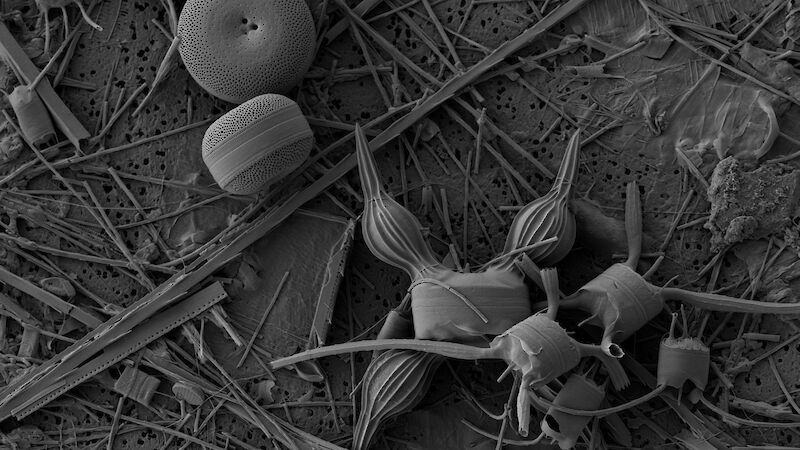Biodiversity
We study the biodiversity of protist populations in the Southern Ocean. New organisms are being found and described every year.
Antarctic Marine Protists was published in 2005. This guide to more than 500 Antarctic protists with photographs and descriptions, is an aid to the identifying these organisms. An online taxonomic key, based on the book, was published in 2014.
Distribution and abundance
We study the distribution, abundance and types of phytoplankton present in the Southern Ocean. We do this using their photosynthetic pigments, by light and electron microscopy, and using electronic particle counters.
Factors that control the abundance of protist populations are studied in relation to oceanography, nutrients and grazers. This information is vital to models of global carbon budgets. We are also looking at the associations between species and ecological processes or oceanic regimes.
Activity of marine bacteria
Scientists study marine bacteria to build an integrated picture of the smallest – but the most important – components of the marine food web. To do this, scientists measure phytoplankton production, carbon dioxide uptake, carbon sedimentation, nutrient concentrations and oceanography.
To find out how Southern Ocean phytoplankton and microbial communities will change as atmospheric CO₂ concentrations increase scientists are characterising:
- the effects of enhanced CO₂ on key species, in particular the carbonate producing coccolithophorids and key diatoms
- the effect of enhanced CO₂ on taxonomic composition and cell size of microbial communities and the processes of photosynthesis, respiration, grazing and biogenic sedimentation.

